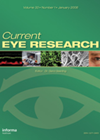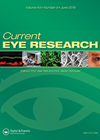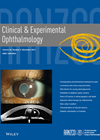
Journal Reviews
Topical nonsteroidal ant-inflammatory drugs (NSAIDs) in patients undergoing cataract surgery
Inflammation is a major risk factor for the development of cystoid macular oedema (CMO) after cataract surgery, leading to breakdown of the blood-retina barrier. There is a correlation between severity of CMO and level of postoperative inflammation. Laser flare meter...
Diclofenac versus Bromfenac after cataract surgery
Non-steroidal anti-inflammatory drugs (NSAIDs) are commonly used after cataract surgery to reduce inflammation and cystoid macular oedema (CMO). Diclofenac 0.1% is used three to five times daily for 28 days and Bromfenac 0.09% twice daily for 14 days postoperatively. The...
Effect of topical diclofenac on postoperative PRK pain: RCT
A major disadvantage of excimer laser photorefractive keratectomy (PRK) is pain and discomfort after the surgery, which is thought to be due to damage to corneal sensory nerve fibres or local release of inflammatory substances. Pain only resolves once corneal...







